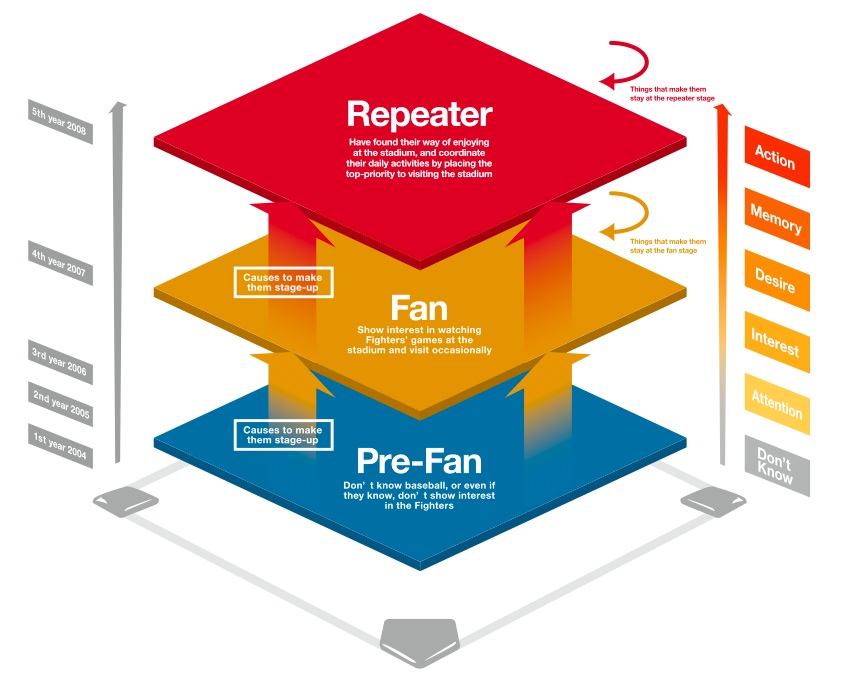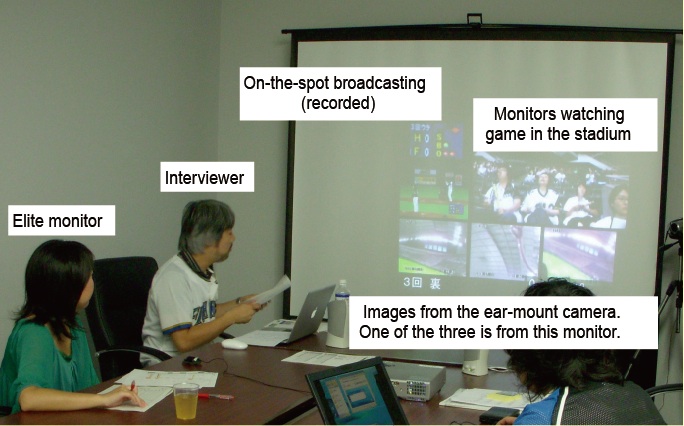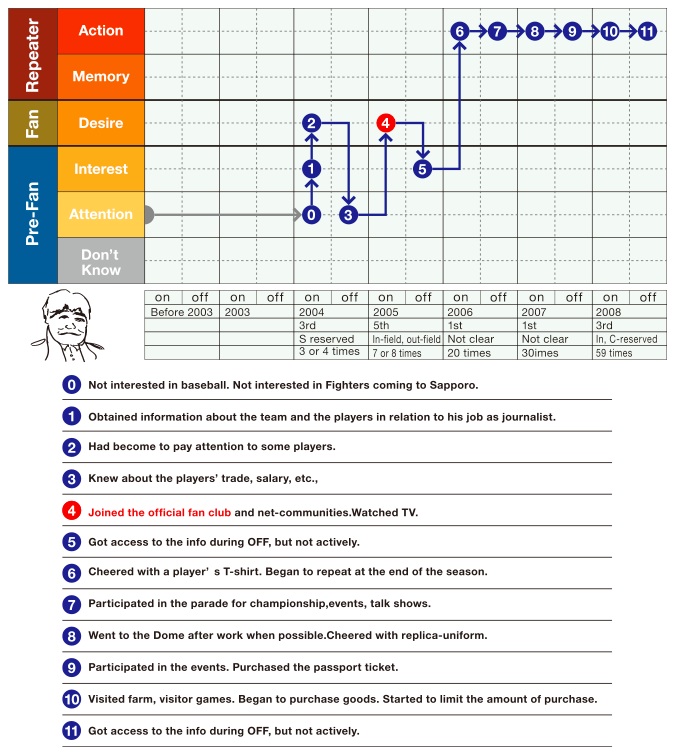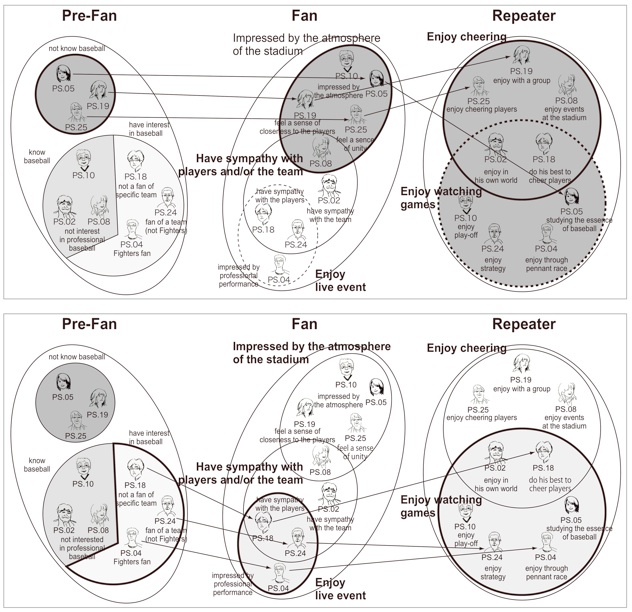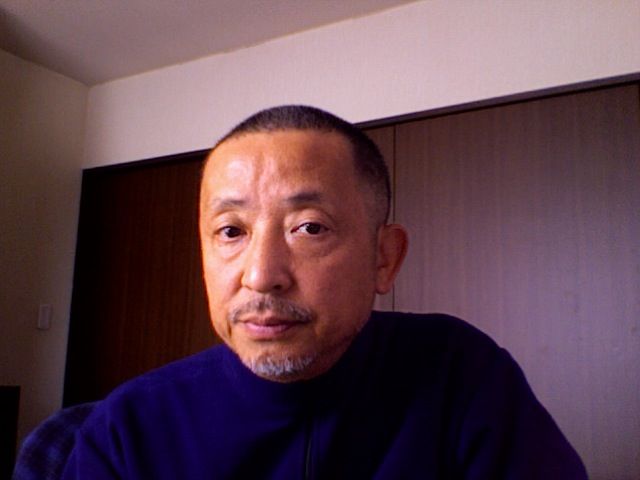« CCE »
Description of CCE (Cognitive Chrono - Ethnography)
Summary
Cognitive Chrono-Ethnography (CCE), is a new study methodology for understanding people's in situ behavior selections in daily life. People select their next behavior to maximize their satisfaction for a given behavioral goal. They appropriately coordinate available cognitive resources to make the best decisions by using their knowledge of past experiences and by processing input from the environment and individual intrinsic state. When a study field is specified, CCE starts by defining critical parameters for understanding people's behavior by considering the nature of behavior selection processes in the field in question, and then designing ethnographical field observations by taking into account the fact that their results will be described in terms of the specified critical parameters. The participants' behavior is recorded, followed by a series of structured retrospective interviews for the purpose of describing their present behavior and obtaining their history of behavioral development. Analysis of the interview results aid in developing models of present behavior selections and their chronological changes.
Introduction
A series of a person's in situ behavior selections can be regarded as the results of moment-by-moment problem-solving activities. The "problem" in this situation is to realize a goal state by successively applying moves in the problem space. Each move causes a transition from one state to another, and the move finally chosen at a specific state depends on the available resources that the individual can manipulate during the time allowed. If enough time is provided, it is possible for a person to select a move that has a greater expected benefit. In this situation, one can utilize as much knowledge as possible to achieve better solutions. However, if enough time is not allowed, the individual must choose an ordinary solution, which, in most situations, is the one that he or she has adopted most frequently in similar situations. This decision is made without deliberate consideration concerning possible future development of the course of actions.
People's in situ behavior can be understood by a two-tiered research approach: domain-independent theorization and domain-dependent instantiation, or theoretically motivated case studies. Domain-independent theorization deals with what people would do at abstract levels. For example, means-end analysis deals with the strategy that people would adopt in problem-solving situations. Newell and Simon (1963, 1972) proposed the General Problem Solver (GPS), a program for solving problems by generating heuristics by means-ends analysis. Although GPS is effective for some problem domains, its usefulness is limited in dealing with time-crucial phenomena, including people's behavior selections in real-world settings. Soar, a direct descendent of GPS developed by Laird et al. (1987), considered real-time constraints by mapping its primitive elements to human cognitive architecture. However, since Soar is not closely coupled with the external world, it is unable to deal with intimate interactions between human beings and the environment. It cannot express the dynamic aspect of human beings' behavior in which the state of the external world changes as human beings take action and human beings' actions depend on the state of the external world. The Model Human Processor with Real-Time Constraints (MHP/RT), developed by Kitajima and Toyota (2012), further extended Soar and GPS to deal with synchronization between a person's behavior and the external environment in the time dimension, which is critical for simulating people's in situ behavior under real time constraints.
Due to the development of the fundamental theoretical understanding of human beings' behavior selection processes, it has become possible to gain an understanding of our daily activities. This subsite concerns domain-dependent instantiation for understanding people's in situ behavior and proposes a novel methodology, Cognitive Chrono-Ethnography (CCE), for use in this research activity. This subsite derives CCE by considering requirements that are imposed on a study methodology for dealing with people's behavior selections in time-critical real-world settings. It first describes the CCE methodology and its requirements. This subsite also provides some case studies that applied the CCE methodology in separate section.
Cognitive-Chrono Ethnography (CCE)
Our 24-hour day is roughly divided into three parts: the hours for work to earn money, the hours for biological activities to live, and the hours for spending time for feeling satisfaction or happiness (i.e., leisure activities, such as playing sports, watching TV, traveling, going to the movies, and so on). Traditionally, the first two categories have been addressed in such study fields as human factors and ergonomics. However, the third category has seldom been studied because of the diversity involved in such activities. This section starts by describing requirements for the CCE methodology to study people's in situ behavior that belongs to the third category. It then suggests four critical factors that can be considered the primary causes of the diversity, which must be disentangled by CCE to obtain coherent understanding of how daily behavior is organized.
> Requirements for the CCE Methodology to Study People's in situ Behavior
What to Understand: We suggest that understanding human beings' in situ daily behavior selections involves understanding relationships between memes that were active at the time the behavior was undertaken and overtly observed behavior, by considering those factors as Two Minds, the multiplicity of goals, and the nature of memory processes. A detailed explanation of memes and these factors, which are called behavior-shaping factors will be given later.
Therefore, a CCE study must answer the following questions about behavioral events:
- Which memes were activated?
- Under which conditions were the memes activated?
- How had the memes been formed?
The answers will be analyzed to construct models that explain and predict people's behavior in the study field.
How to Understand: Next, we discuss the kinds of data that are available for deriving answers to the above questions. The origins of the data are the results of observing people's daily behavior selection processes in real-world settings.
Data that are obtainable with little interference with the participants' activities are as follows:
- Behavior observation records: Investigators record the participants' behavior without intervening in their activities.
- Behavior measurement records: Sensors are attached to the participants to record their physiological activities (e.g., a pin microphone to record their vocalization, a small ear-mounted camera to record the scene they are viewing, and an electrocardiograph to record their physiological responses to the events).
- On-site self-reports: Study participants themselves take photos, brief notes, and voice recording concerning their activities while their memories of the events remain fresh.
- Retrospective interviews: Behavioral observation records, behavioral measurement records, and on-site self-reports described above are used to reconstruct participants' active memes at the time of events by conducting a series of retrospective interviews.
> CCE Procedure
CCE is carried out in the following six steps:
- Define the study field: It is important to specify the study field sufficiently. Manifestations of behavior-selection shaping factors under the characteristic atmosphere of the study field are observed in the study field.
- Define critical parameters: Critical parameters are initial hypotheses about the behavior-selection shaping factors that should work when people's activities are organized in the study field. Steps 1 and 2 are conducted interchangeably to define the parameter space to be explored.
- Select elite monitors: Study participants (elite monitors) are selected. Each point in the parameter space has values. The study question is "what such-and-such people would do in such-and-such way in such-and-such circumstance (not an average behavior)." Therefore, elite monitors are selected by consulting the parameter space. In this process, it is necessary that the points in the parameter space, which correspond to the elite monitors, are appropriate for analyzing the structure and dynamics of the study field. Monitor selection is conducted by purposive sampling rather than by random sampling.
- Record the monitors' behavior: The elite monitors are expected to behave as they normally do in the study field. Their behavior is recorded in such a way that the collected data is rich enough to consider the results in terms of the parameter space.
- Conduct interviews: The collected data are used to clarify the structure of the meme of the elite monitors by conducting a series of structured interviews. The results are analyzed for the purpose of defining the basis of the representations of the collected data.
- Construct models: The last step of CCE is to construct models that address "what such-and-such people would do in such-and-such way in such-and-such circumstances."
> Behavior-Selection Shaping Factors
CCE studies are carried out by keeping in mind the following critical factors for understanding people's daily behavior.
Two Minds: Recently, Daniel Kahneman, winner of the Nobel Prize in Economics in 2002, introduced behavioral economics, which stems from the claim that human decision-making is governed by Two Minds. This theory is based on the idea that human beings' behavior is the outcome of two different systems, an "Experiential Processing System (System 1)" and a "Rational Processing System (System 2)" (Evans and Frankish, 2009; Kahneman, 2003), which essentially extends the concept of bounded rationality (Simon, 1956) in the domain of judgement and decision-making under uncertainty. System 1 is a fast feed-forward control process, driven by the cerebellum and oriented toward immediate action; it is experienced passively, outside conscious awareness (one is seized by one's emotions). In contrast, System 2 is a slow feedback control process, driven by the cerebrum and oriented toward future action; it is experienced actively and consciously (one intentionally follows the rules of inductive and deductive reasoning). There is a huge difference in processing speed between the two systems; rational processing typically takes minutes to hours, whereas experiential processing typically extends from hundreds of milliseconds to tens of seconds (Newell, 1990). A large part of human beings' daily activities are immediate actions and are therefore under the control of System 1. System 2 intervenes with System 1 to better organize the overall outcome of the processing through consciously envisioning possible futures.
Meme that Mediates Individuals and Society: Moment-by-moment decision-making is carried out by utilizing knowledge that is activated from long-term memory in response to recognized objects that exist in the external world. A meme is an entity that represents the information associated with the object that a person can recognize. Therefore, an active meme plays a critical role in the decision-making process. The term "meme," originally coined by Dawkins (1976), was conceptual and was not defined clearly. However, a meme can be defined more clearly by assuming that the meme itself is structured in accord with the structure of living organisms, which is characterized by a non-linear, multilayered information structure.
The structured meme consists of the following three non-linear layers:
- Action-level memes that represent bodily actions.
- Behavior-level memes that represent behaviors in the environment.
- Culture-level memes that represent culture.
Multiplicity of Behavioral Goals: Morris (2006) defined seventeen happiness goals. It is assumed that an individual pursues one of the seventeen goals at every moment, and switches to another when appropriate, by evaluating the current circumstances. CCE must identify the current goal and clarify the goal-enabling conditions.
An individual feels satisfaction when a goal is accomplished. The amount of satisfaction is influenced by the factors that characterize the shape of the trajectory of behavioral outcomes. Six critical factors make people feel satisfaction:
- Change: Perceptual functions work by sensing dynamic changes. Therefore, responses while the system is stable are limited. A condition for experiencing satisfactory feeling is "change."
- Succession of good results: Successive happiness tends to create memory traces for the best experience and the final outcome of the overall estimation of the events that have led to successive good results.
- Direction of absolute outcome (denoted as 2 in Fig. 1): A change in a good direction at the end of a series of events tends to create a memory trace of satisfactory feeling.
- Amplitude of success (denoted as 1 in Fig. 1): The greater the difference between the highest event and the lowest event in terms of strength of satisfactory feeling, the stronger the strength of memory trace for all the events, including the highest and the lowest.
- Absolute amount of outcome (denoted as 3 in Fig. 1) and direction of absolute outcome (denoted as 2 in Fig. 1): When the absolute outcome is acceptable and the contents in working memory at the time of the final event are good, they jointly affect the result of estimation of all the events.
- Bad results are not memorized: An individual strongly reacts to an event when the degree of badness of that event exceeds a certain threshold value.
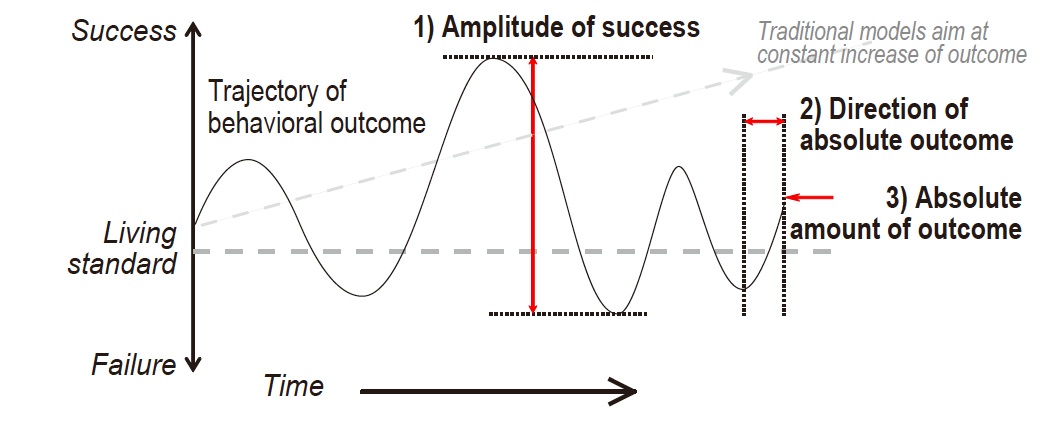
Figure 1. Critical Factors that Make People Feel Satisfaction.
Usage of Memory under Strong Interaction between Environment and Behavior: Memory processes play a crucial role in the decision-making process and its result (i.e., the behavior the person ultimately selects and carries out). As Newell (1990) described in his seminal book, Unified Theories of Cognition, human beings operate differently, depending on the characteristic times of their environment (Fig. 2).
In parallel with Newell (1990), we suggest that, when real time constraints are strong, slow memory processes, which use long-term memory, do not participate in the whole processing. In other words, only the unconscious side of the Two Minds (System 1) works. In contrast, when few real time constraints exist, System 1 and System 2 work collaboratively in some cases and independently in others. Memory processes stay in the back of meme activation; therefore, when a person wants to envision active memes at the specific time of the event, he or she must take into account the plausible memory processes that operated, given the time constraint posed on the participant at that time.
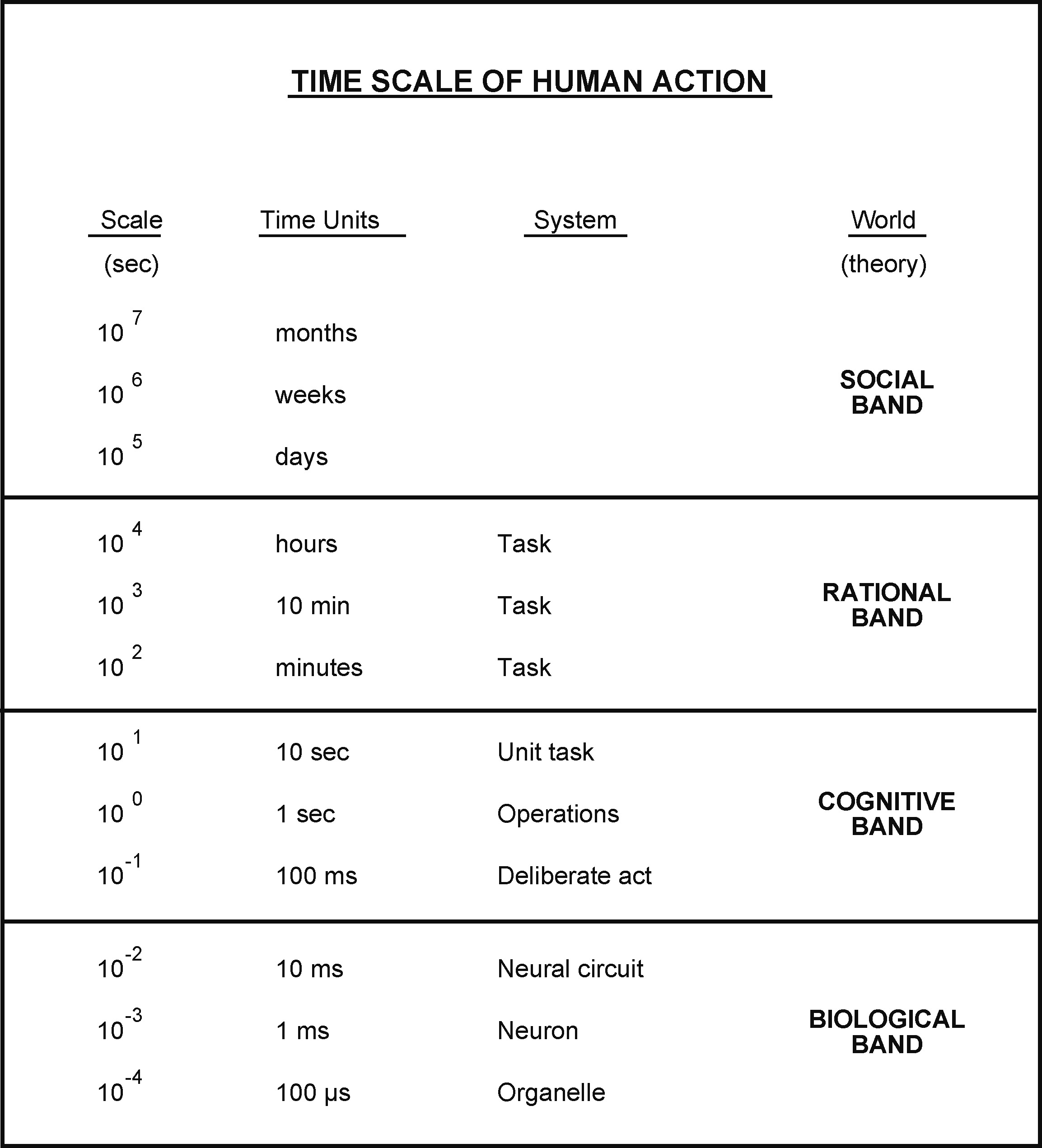
Figure 2. Newell's Time Scale of Human Action.
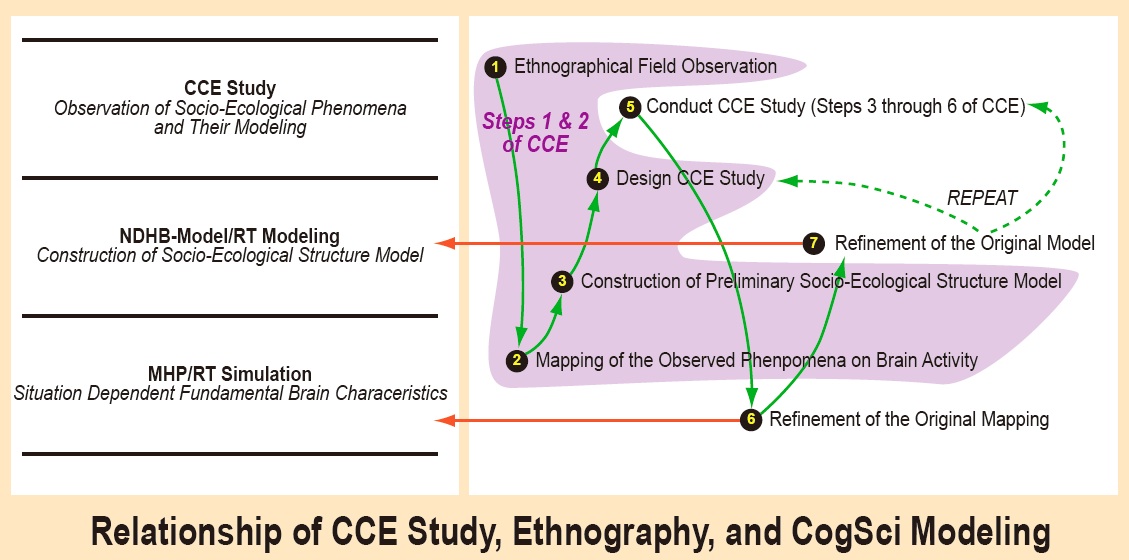
Figure 3. Relationship of CCE study, ethnography, and cognitive science modeling.
References
- Dawkins, R. (1976) The Selfish Gene, Oxford University Press, New York City.
- Evans, J.S.B.T. and Frankish, K. (2009) In Two Minds: Dual Processes and Beyond, Oxford University Press, Oxford.
- Kahneman, D. (2003) A perspective on judgment and choice, American Psychologist, 58 (9), 697-720.
- Kitajima, M. and Toyota, M. (2012) Simulating navigation behaviour based on the architecture model Model Human Processor with Real-Time Constraints (MHP/RT), Behaviour & Information Technology, 31(1), 41-58. http://dx.doi.org/10.1080/0144929X.2011.602427
- Laird, J.E., Newell, A. and Rosenbloom, P.S. (1987) Soar: An architecture for general intelligence, Artificial Intelligence, 33, 1-64.
- Morris, D. (2006) The nature of happiness, Little Books Ltd., London.
- Newell, A. (1990) Unified Theories of Cognition (The William James Lectures, 1987), Harvard University Press, Cambridge, MA.
- Newell, A. and Simon, H. A. (1963) GPS, a program that simulates human thought. In Computers and Thought, (Eds) E.A. Feigenbaum and J. Feldman, McGraw-Hill, New York, 279-296.
- Newell, A. and Simon, H.A. (1972) Human Problem Solving, Prentice-Hall, Englewood Cliffs, NJ.
- Simon, H.A. (1956) Rational choice and the structure of the environment, Psychological Review, 63, 129-138.
- Simon, H.A. (1996) The Sciences of the Artificial, 3rd edition, The MIT Press, Cambridge, MA.
- Smith, M.S. and Vela. E. (2001) Environmental context-dependent memory: a review and meta-analysis, Psychonomic Bulletin & Review, 8, 203-220.

